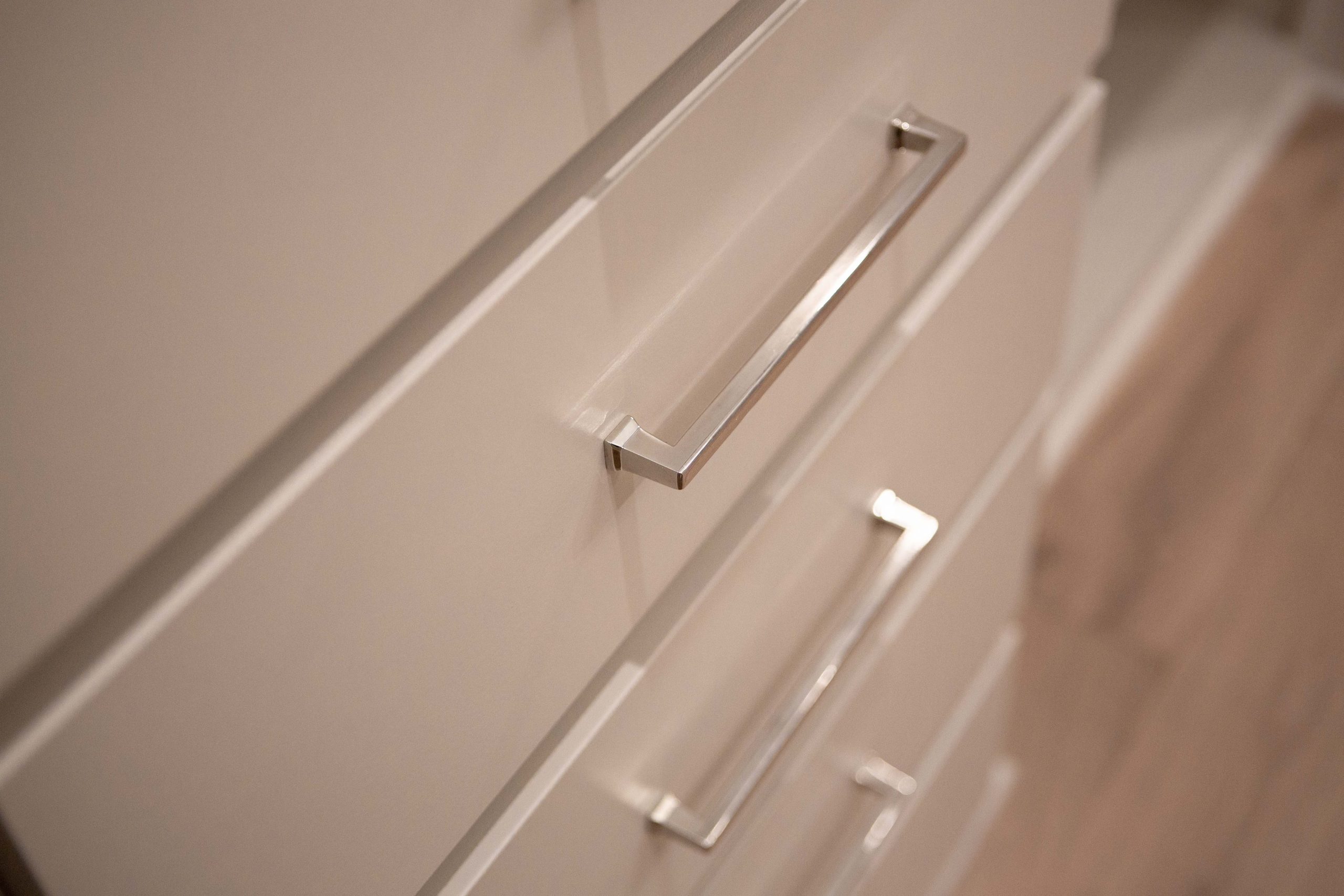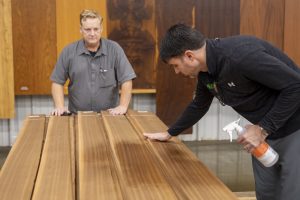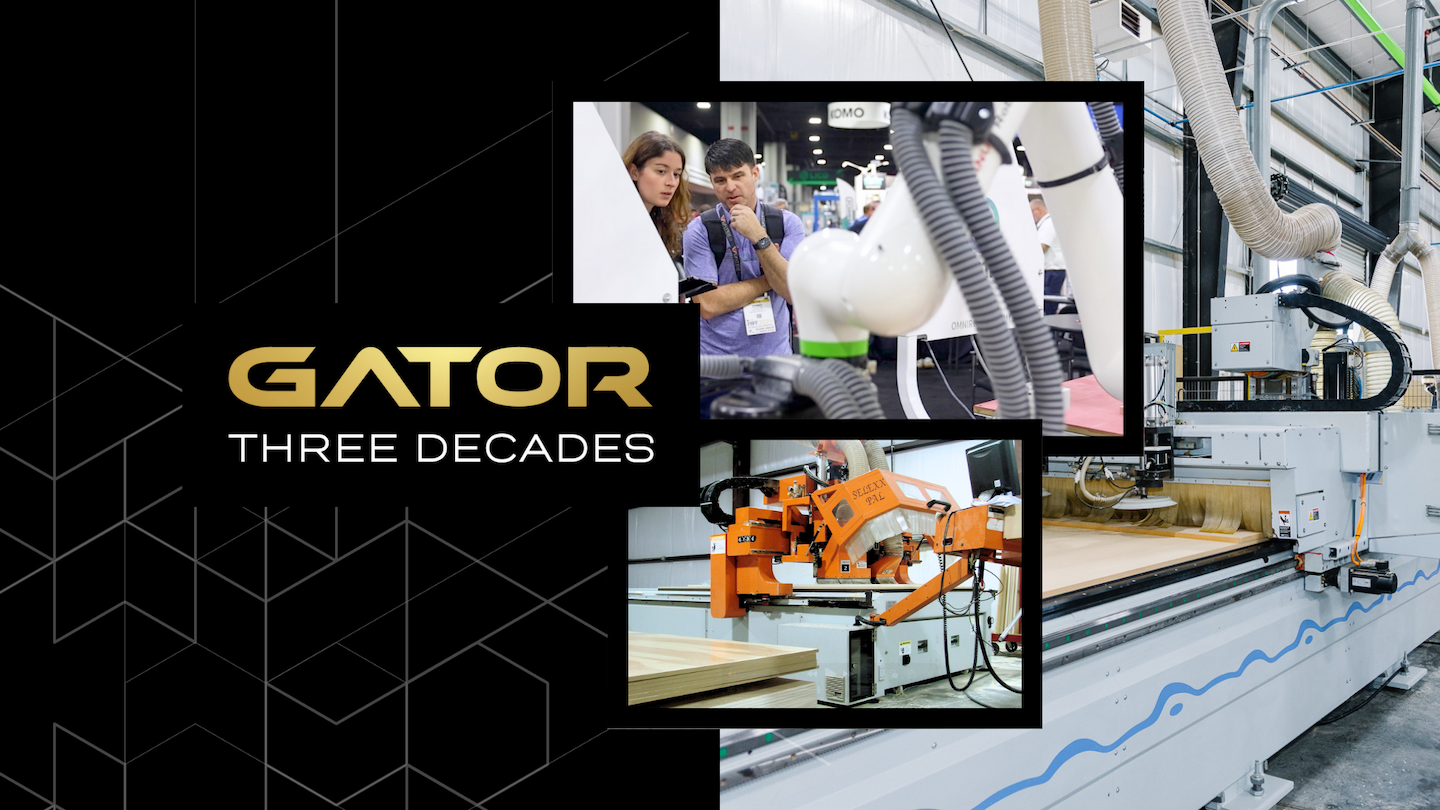
Cabinetry Terms: The Language of Cabinet Craftsmanship
When it comes to designing and crafting exquisite cabinets, a comprehensive understanding of cabinetry terms is essential. At Gator Millworks, we take pride in our expertise and attention to detail. This attention to detail is made possible by our years of experience and knowledge of the key elements in millworking such as the different pieces of cabinets, joinery methods, cabinet door construction types, door styles, materials, storage accessories and hardware terminology.
The Basic Cabinet Elements
Just like with anything, there are the basic foundational aspects that hold things together. And without these essential pieces, we wouldn’t be fortunate enough to expand on their structure to create such beautiful and unique customized work. To become skilled in anything, you first have to start at the beginning:
- Rail and Stiles: The horizontal and vertical framing elements of a cabinet door.
- Center Panel: This central part of the cabinet door can be raised or flat, adding depth and character to the design.
- Inner and Outer Edge Profiles: Inner edge profiles refer to the style of the inside edge next to the center panel, while outer edge profiles define the style of the outside edges of a door or drawer.
- Face Frame: The face frame is attached to the front of the cabinet, providing a mounting point for cabinet doors.
- Case: Comprising the outer walls of the cabinet, typically made from plywood or furniture board, the case provides structural integrity.
- Drawer Front: Also known as a drawer face, this visible section can either match the cabinet door style or create a striking contrast.
- Toe-Kick: Located at the cabinet’s bottom, the toe-kick is a recessed space near your feet.
Understanding Joinery
Crafting cabinets that stand the test of time requires skillful joinery methods. Each joint has a purpose and is used for specific reasons. Some are more sophisticated while some are more simplistic; however, each has their place in the cabinetry world. At Gator Millworks, we employ the following techniques:
- Dovetail Joint: Known for its strength, dovetail joints are often used for cabinetry drawer boxes. This unique joint, when specifically crafted by hand, is considered very difficult to master and takes immense skill.
- Mortise & Tenon: This versatile joinery method is commonly employed for 5-piece cabinet doors and drawers.
- Mitered Joints: Beveling two parts at a 45 degree angle creates seamless cabinet ends and enhances door strength.
- Butt Joint: One of the most common and highly obtainable joints in the millworking trade, a butt joint simply fuses two separate pieces of wood together with the use of glue or nails.
Cabinet Door Construction Types
The choice of construction type significantly influences the appearance of the cabinets. The desired style and design of the room is typically mirrored first through the construction of the cabinets. Three main options include:
- Full Overlay Cabinets: These cabinets feature doors and drawer fronts that cover most of the cabinet face frame, offering a custom look.
- Standard Overlay Cabinets: Also known as Traditional Overlay, these cabinets have a more exposed face frame when doors and drawers are closed.
- Inset Cabinets: Hand-fitted doors and drawers sit flush within the face frame, providing a classic, hand-crafted appearance.
Cabinet Door Styles
Cabinet doors come in various styles, each with its own unique charm. Since cabinet doors are front and center, it’s important to find a door style that fits with the design theme of the room. This will only help elevate the style that is already set in place with the construction of the cabinets. Some cabinet doors styles can include:
- Raised Panel Doors: These doors feature a raised center panel with a specific profile, ideal for traditional and transitional aesthetics.
- Flat Panel Doors: With a flat center panel and inside edge profile, these doors offer a sleek, clean look, suitable for various design styles.
- Slab Doors: These solid, flat cabinet doors lack rails, stiles, or a center panel, making them perfect for contemporary designs.
- Mullion Doors: Combining functionality and elegance, mullion cabinet doors feature panes of glass, mirrors, or other inserts.
Cabinet Finishes & Materials
Selecting the right finish and material can make or break the cabinet’s appearance. It’s also like the icing on the cake. If the finish isn’t right, the whole design style might not come together as anticipated. Some materials and finishes include:
- Glaze Finish: This hand-applied finish technique adds depth and dimension to cabinetry, accentuating carved details.
- Distressed Finish: Creates a weathered or aged appearance for a timeless look.
- Acrylic Cabinets: Ideal for modern designs, these cabinets offer high-gloss or ultra-matte finishes.
- Veneer Cabinets: A thin covering enhances the appearance of cabinet doors and frames.
- Laminate Cabinets: Made with layers of Kraft paper impregnated with melamine resin, this finish ensures consistent color and texture.
- Thermofoil Cabinets: These cabinets feature a vinyl finish material molded over the cabinetry wood, known for easy maintenance.
Storage Accessories
Efficient storage solutions are vital to support the overall functionality in cabinetry. At the end of the day, what use is beautiful cabinetry if it is not functional and practical for its users? Some common storage accessories include:
- Pull-Out: These accessories open with a single motion, allowing the cabinet door or drawer to pull out the storage accessory simultaneously.
- Roll-Out: These accessories are rolled out after opening the cabinet door, granting easy access to items stored at the back.
Cabinetry Hardware Terms
Choosing the right hardware is the finishing touch to your cabinet design. This feature is unique to the needs of every client and varies by lifestyle, design and preference.
- Soft-Close: Also known as “Quiet-Close,” this hardware ensures silent, self-closing drawers and doors, preventing damage to cabinets.
- Drawer Guide: This mechanism supports and glides drawers smoothly.
- Barrel Hinge: Commonly used on inset cabinetry, this hinge style is visible on the exterior of the cabinet door, adding to its aesthetic appeal.
At Gator Millworks, we are passionate about creating exquisite cabinets that meet unique design visions and provide functional means. Explore the endless possibilities and let us bring your cabinet visions to life. Reach out to us today to learn more about how we can help.




